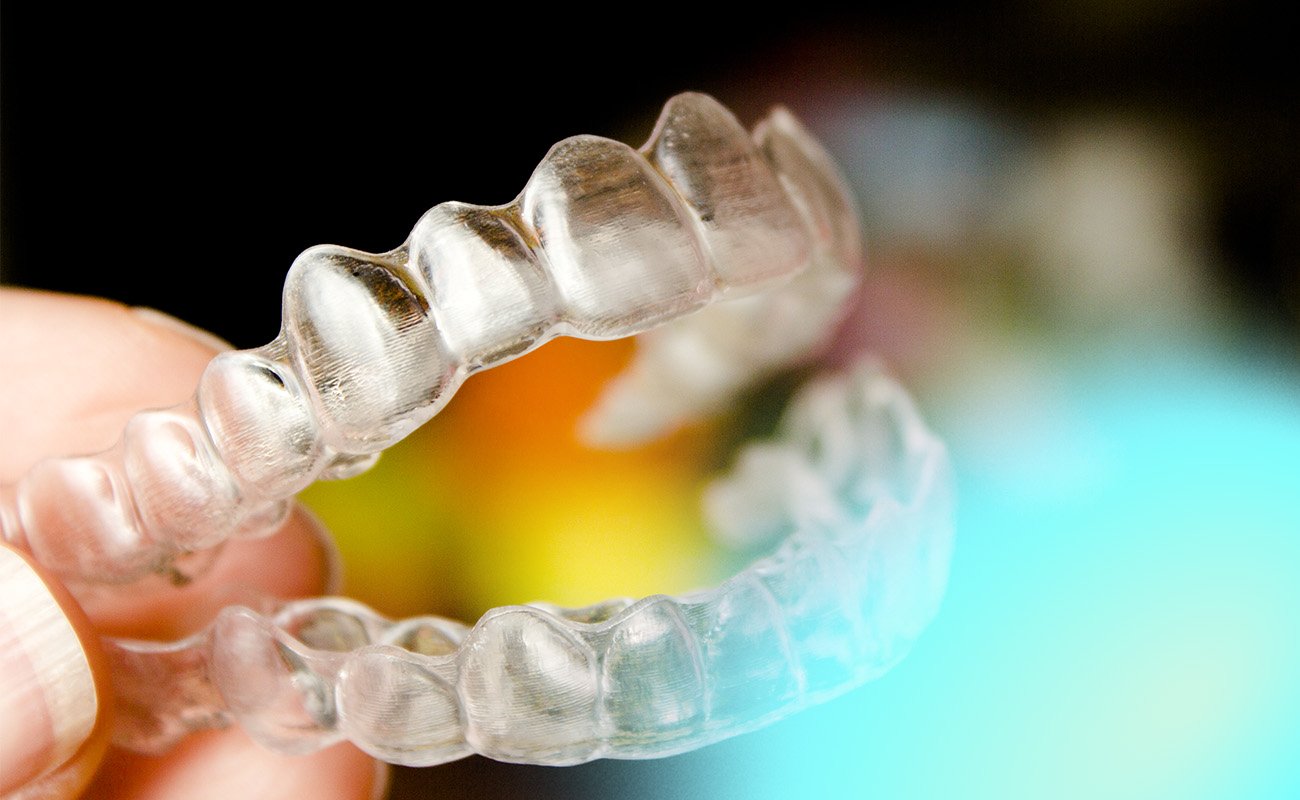Nighttime aligners are a relatively new type of orthodontic treatment that provides an alternative to traditional braces and all-day aligners. In this article, we will investigate the many aspects of nighttime aligners, such as what one should expect in terms of treatment and results. We will also explore how they work at realigning teeth, the length of treatments, and which providers offer them.
If you or someone you know is interested in nighttime aligner treatment and want to know more about it, then this article is for you. Read on to discover everything you need to know about nighttime aligners before and after.
How do Night Aligners Work?
Night aligners are an innovative orthodontic solution designed to correct teeth alignment while the wearer sleeps. These aligners are constructed from a clear, flexible plastic material tailored to fit snugly over the individual’s teeth. The customization process involves taking precise impressions or digital scans of the teeth, which are then used to fabricate a series of aligners. Each aligner in the series is slightly different, designed to progressively adjust the teeth’s position toward the desired alignment.
The recommended usage for night aligners is approximately 10-12 hours per night, ideally aligning with the wearer’s sleep schedule. This regimen allows for the correction of dental alignment issues without interfering with daytime activities or the wearer’s lifestyle. For optimal results, it is advised to transition to a new aligner every 1-2 weeks, following the treatment plan prescribed by a dental professional. This gradual progression ensures a consistent and controlled adjustment of the teeth.
Night aligners are particularly effective for individuals with mild dental misalignments, such as crooked teeth, and spacing issues. However, they may not be suitable for more complex orthodontic cases that require continuous pressure or intricate tooth movements. In such instances, traditional braces or more advanced orthodontic treatments might be necessary to achieve the desired results.
See our reviews of all-day aligners.
Night Aligners Vs All Day – Main Differences
Let’s take a look at the differences between nighttime and all-day aligners:
Treatment Time
One of the key differences between night aligners and traditional all-day aligners is the treatment time. Night aligners are specifically designed to be worn for approximately 10-12 hours, primarily during the wearer’s sleep. This limited wear time extends the overall duration of the treatment compared to all-day aligners, which are typically worn for around 20-22 hours daily.
The extended wear time of all-day aligners allows for constant pressure to be applied to the teeth, potentially leading to faster orthodontic results. In contrast, night aligners offer a more gradual approach to teeth alignment due to their reduced daily usage. As a result, individuals using night aligners may experience a longer treatment period to achieve the same level of correction as those who wear their aligners throughout the entire day.
Materials Used
The difference in materials used for night aligners compared to all-day aligners is a key factor that sets them apart. Both types of aligners are manufactured from high-quality, medical-grade plastics that are BPA-free, ensuring they are safe for extended contact with oral tissues. However, the material composition varies slightly to suit their respective wearing schedules.
Night aligners utilize a material that is generally thicker than what is used for all-day aligners. This thickness is designed to align with the requirements of nighttime use, providing the necessary durability to withstand the pressures exerted on the teeth during sleep.
Dental Hygiene
In addition to the thicker material used in night aligners, another difference between aligners is that night aligners do not need to be removed when eating or drinking as they are only worn at night. This can be a major benefit for patients who find the removal and cleaning process of all-day aligners to be inconvenient. Nighttime aligners can simply be put in before bed and removed in the morning, with no interruption to the patient’s daily routine. This makes them a popular choice for patients who lead busy lifestyles and want a hassle-free orthodontic treatment option.
See our article: Night Aligners for Teeth – PROs and CONs, Night Aligner Providers.
Types of Malocclusions They Treat
The types of malocclusions treated by night aligners versus all-day aligners can vary, reflecting a difference in their application and effectiveness. All-day aligners, worn for approximately 20-22 hours daily, are generally suited for a broader range of orthodontic corrections. This is because the constant pressure they exert throughout the day can effectively address issues such as severe crowding, significant gaps, and more complex bite problems. On the other hand, night aligners, designed to be worn for a shorter duration of about 10-12 hours primarily during sleep, are typically recommended for milder cases of dental misalignment. Their limited wear time makes them more suited for correcting minor crowding, and small spacing issues. This difference in usage time directly influences the scope of malocclusions each type of aligner can effectively treat.
See our article: Overbite Face Shape.

Which Providers Offer Night Aligners?
Byte At-Night
Made of high-quality medical-grade materials, Byte At-Night aligners are designed to be worn exclusively at night, requiring only 10 hours of wear per day. The average treatment time with night aligners is 5 to 6 months, which is considerably faster than other treatments.
While priced at $2,399, which is around $400 more than the all-day version, the package includes a free HyperByte device that helps accelerate the treatment process. The HyperByte device uses gentle vibrations to help seat the aligners more effectively, resulting in a more precise and accurate outcome. The aligners also come with a free retainer to help maintain the newly achieved alignment.
See our review of Byte.

Byte
An affordable option with refundable impression kits, free HyperByte, and a Byte for Life guarantee.
Check out Byte AlignersAlignerCo
AlignerCo offers a night aligner that costs approximately $100 more ($1045 with discount) than their all-day aligner version and must be worn for 8-10 hours at night. Treatment with their night aligner is expected to take 6 to 8 months. AlignerCo also offers two payment plans: NightFlex ($87/mo for 12 months) and NightFlex Easy ($150/mo for 6 months with a $445 down payment).
Additionally, each purchase (except the NightFlex Easy plan) includes a free teeth whitening kit and retainer, making AlignerCo a cost-effective and convenient option for those looking to improve their smile.
See our review of AlignerCo.

AlignerCo
The cheapest at-home aligners, with monthly plans, no down payment, and considerable discounts.
Check out AlignerCo AlignersNewSmile
NewSmile’s night aligners offer a treatment time of 8 to 10 months, making them a convenient and comfortable option for people seeking orthodontic treatment. They come with free retainers, a teeth whitening kit, and free shipping. The price of the night aligners is $1,595, which is slightly less expensive than their all-day aligners. NewSmile also provides financing options to make their aligners more accessible to customers.

NewSmile
Affordable at-home treatment with positive reviews offering superior look and comfort.
Check out NewSmile AlignersNighttime Aligners Before and After
Nighttime aligners are becoming increasingly popular as they provide a convenient and effective way to achieve a healthier, straighter smile. Patients who have used nighttime aligners have reported numerous benefits, such as improved self-confidence, better oral hygiene habits, and overall oral health, better speech, and reduced issues related to malocclusion.
These aligners are particularly useful for treating relapse of orthodontic treatment, helping to prevent slight shifts in teeth positions or to correct mild orthodontic relapses that happen naturally over time.
Patients can expect to see results within six to nine months for mild orthodontic issues. Unlike traditional aligners, treatment is less time-intensive, and since it mostly takes place during sleep, it won’t interfere with daily activities such as school or work.
Sources
Tamer, I. et al. Orthodontic Treatment with Clear Aligners and The Scientific Reality Behind Their Marketing: A Literature Review. Turkish Journal of Orthodontics. 2019. doi: 10.5152/TurkJOrthod.2019.18083. Available online at: https://www.ncbi.nlm.nih.gov/pmc/articles/PMC7018497/
Buschang, P.H., Shaw S.G., Ross M., Crosby D., Campbell P.M., Comparative time efficiency of aligner therapy and conventional edgewise braces. Angle Orthod (2014). DOI: 10.2319/062113-466. Available online at: https://meridian.allenpress.com/angle-orthodontist/article/84/3/391/58505/

